From its misty perch overlooking the River Clyde, Hill House appears to be just another of the imposing Scottish baronial homes in the affluent Glasgow suburb of Helensburgh. At closer range, where one can see the simplified Portland cement edifice and absence of gothic ornaments, it's clear that this isn’t just another traditional house. Rather, it’s an early modernist landmark built by architect Charles Rennie Mackintosh.
Mackintosh is most well-known today for his sleek, black high-backed chairs, but his highest achievement was in interior design. Hill House was commissioned by Walter Blackie, a prominent Glasgow publisher, and is one of Mackintosh’s few domestic projects, completed in 1904 at the height of Art Nouveau. It possesses typical elements of the style, namely the expression of organic forms in the architectural details, but also Mackintosh made advancements in the introduction of simple geometries. With these innovative motifs, he pushed design toward its modernist future and influenced a wide range of artists, designers and architects, including Gustav Klimt, Walter Gropius and the Bauhaus school and Frank Lloyd Wright.
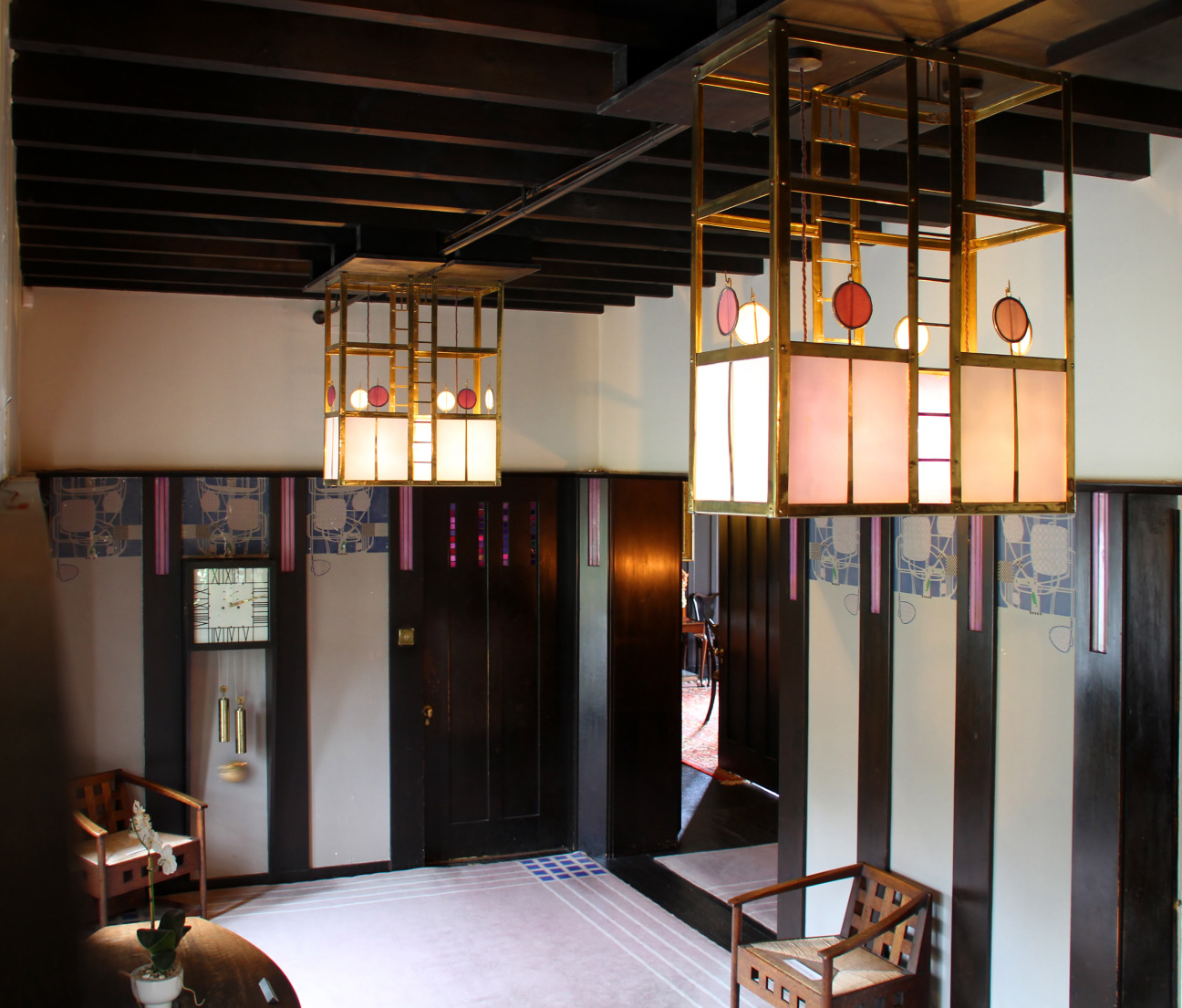
While the exterior of Hill House primarily pays homage to vernacular architecture of the country, Scottish influence is only one of many here. Mackintosh took inspiration from disparate sources such as Japanese, monastic and medieval architecture. These stylistic borrowings did not result in mere pastiche, rather in a surprising, delicate synthesis.
Mackintosh was an auteur who designed every element of his projects. His residential work was thus limited as private clients were reluctant to hand over complete control. Hill House presents a comprehensive offering of his talents, from the wallpaper to the carpet to the furniture. He even designed the tools for the fireplace. Mackintosh once lightly admonished Mrs. Blackie for putting yellow flowers in a vase in the entryway. He thought only purple blooms were suitable.

Upon entering the drawing room, a bay of light comes in through the large Shinto screen-inspired windows and purple stained-glass portals. Mackintosh provided the room with generous light to encourage creativity and freedom, according to the documentary A Modern Man (1996), which recorded the architect’s life and work. The palette promotes this mood: the light reflects brilliantly off the white interior walls, punctuated with playful silver, purple and pink accents.
The colors may not seem surprising to the contemporary eye, but they were a radical departure from the heavy, dark Victorian-era wall treatments that were still dominant at the time of design and construction. The light, even effeminate, palette as a backdrop accentuates the impact of the dark, masculine chairs and coffee table in the center of the room. With severe geometric lines and elongated silhouettes in a seductive black gloss, the furniture provides a futuristic look, a quality that landed it on the set of Blade Runner (1982).
The same square geometric pattern in these pieces is reflected in the room’s fireplace, carpet, windows, dining chairs, tables and curtains. It’s Mackintosh signature that can be found in nearly all his projects, including the Willow Tea Room (1903) in Glasgow and Windy Hill House (1901) in Kilmacolm, Scotland and reflects the architect’s forward-thinking design sensibility. His contemporaries, European Art Nouveau architects like Hector Guimard and Antoni Gaudi, were still working in organic curvilinear forms, not yet willing to embrace the geometric shapes that would soon dominate design in the subsequent Art Deco period.
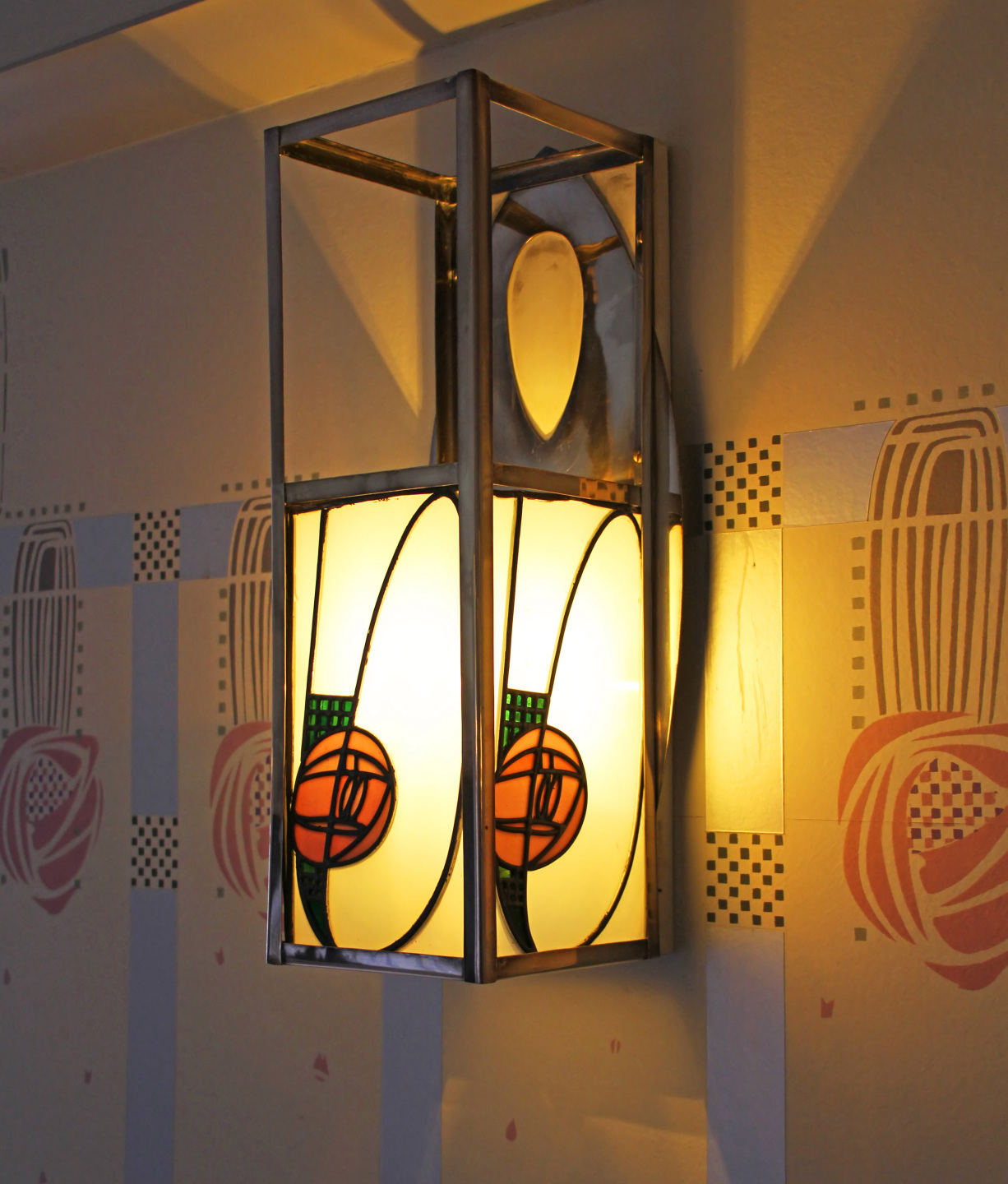
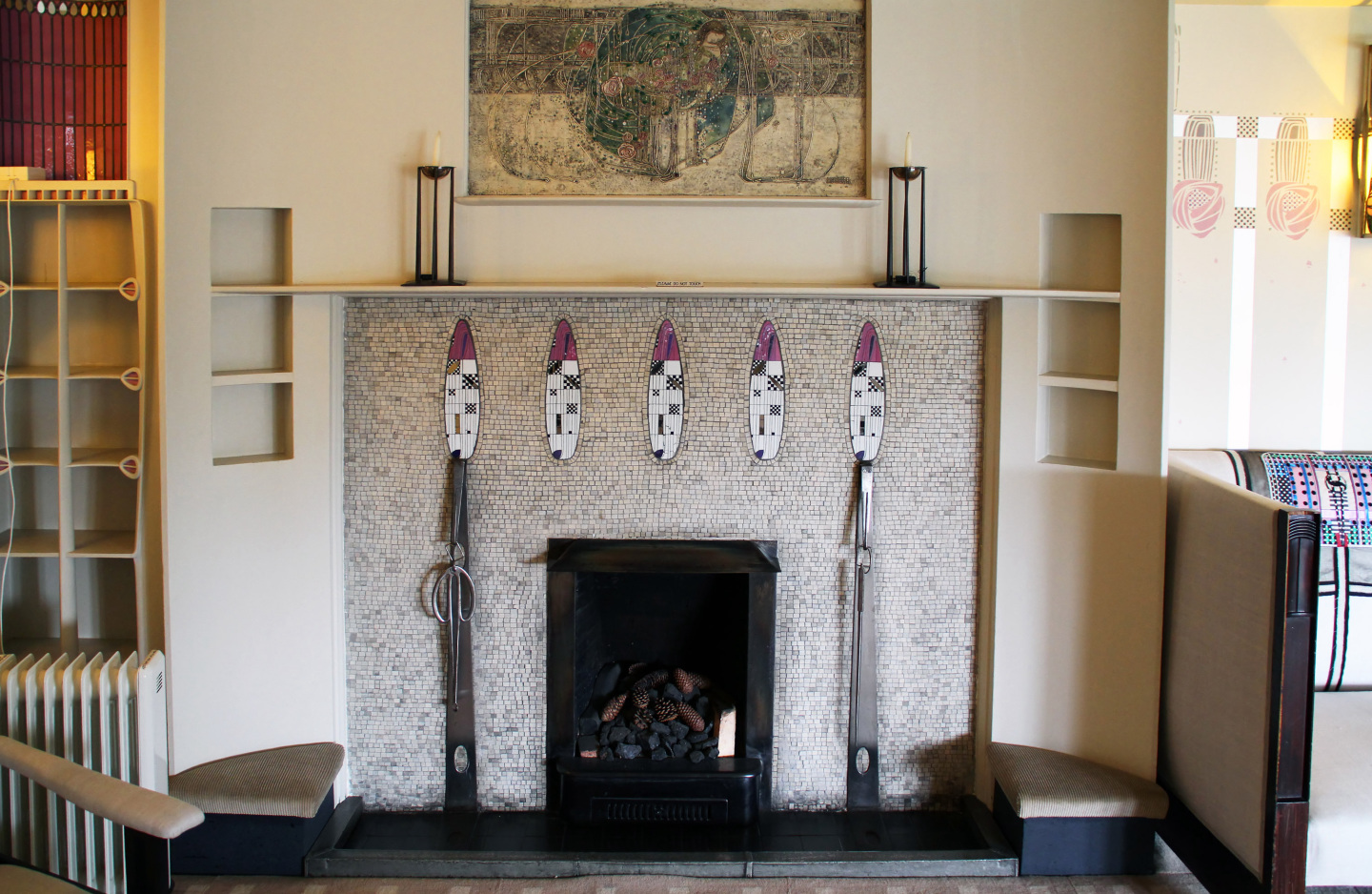
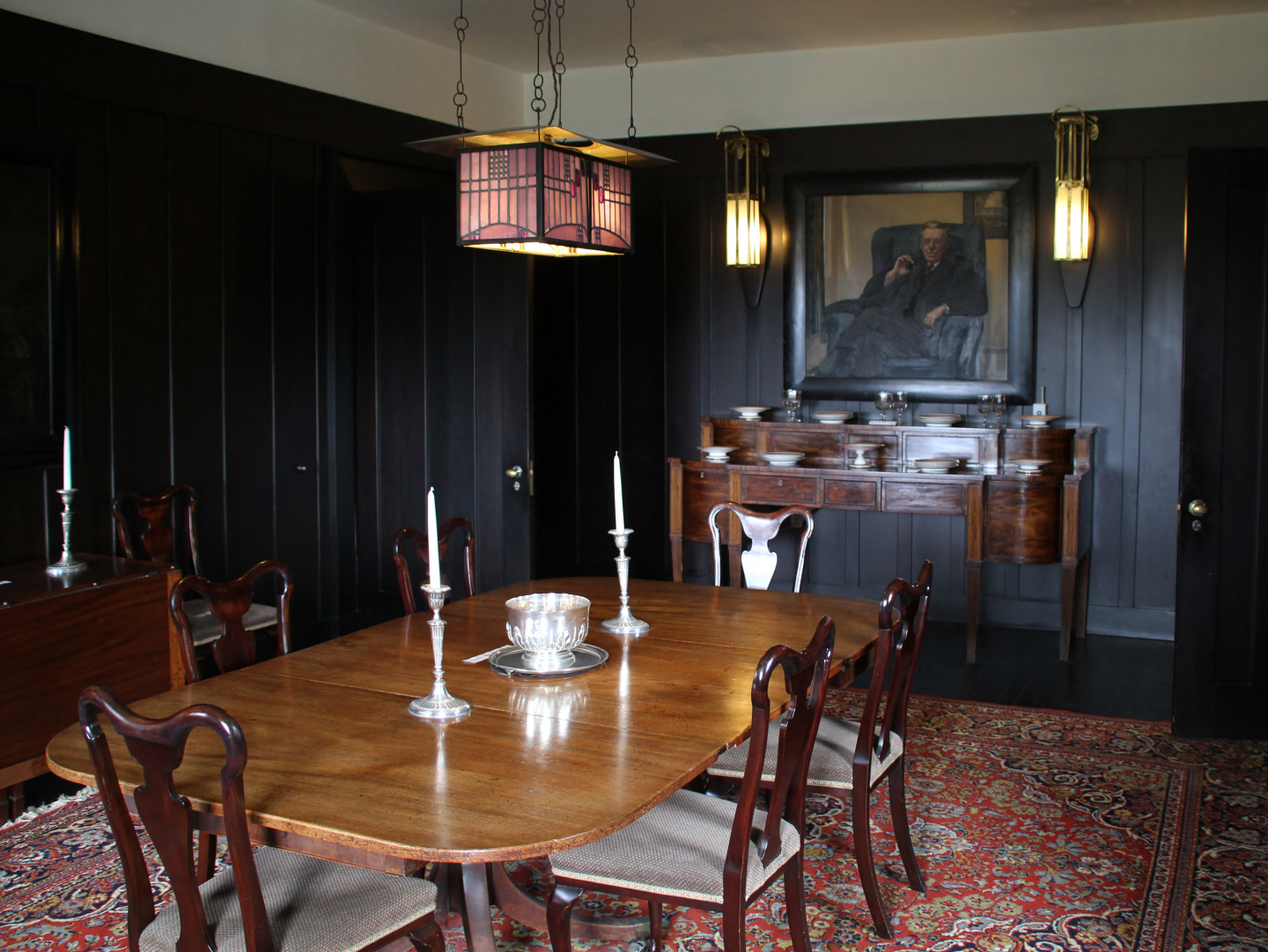
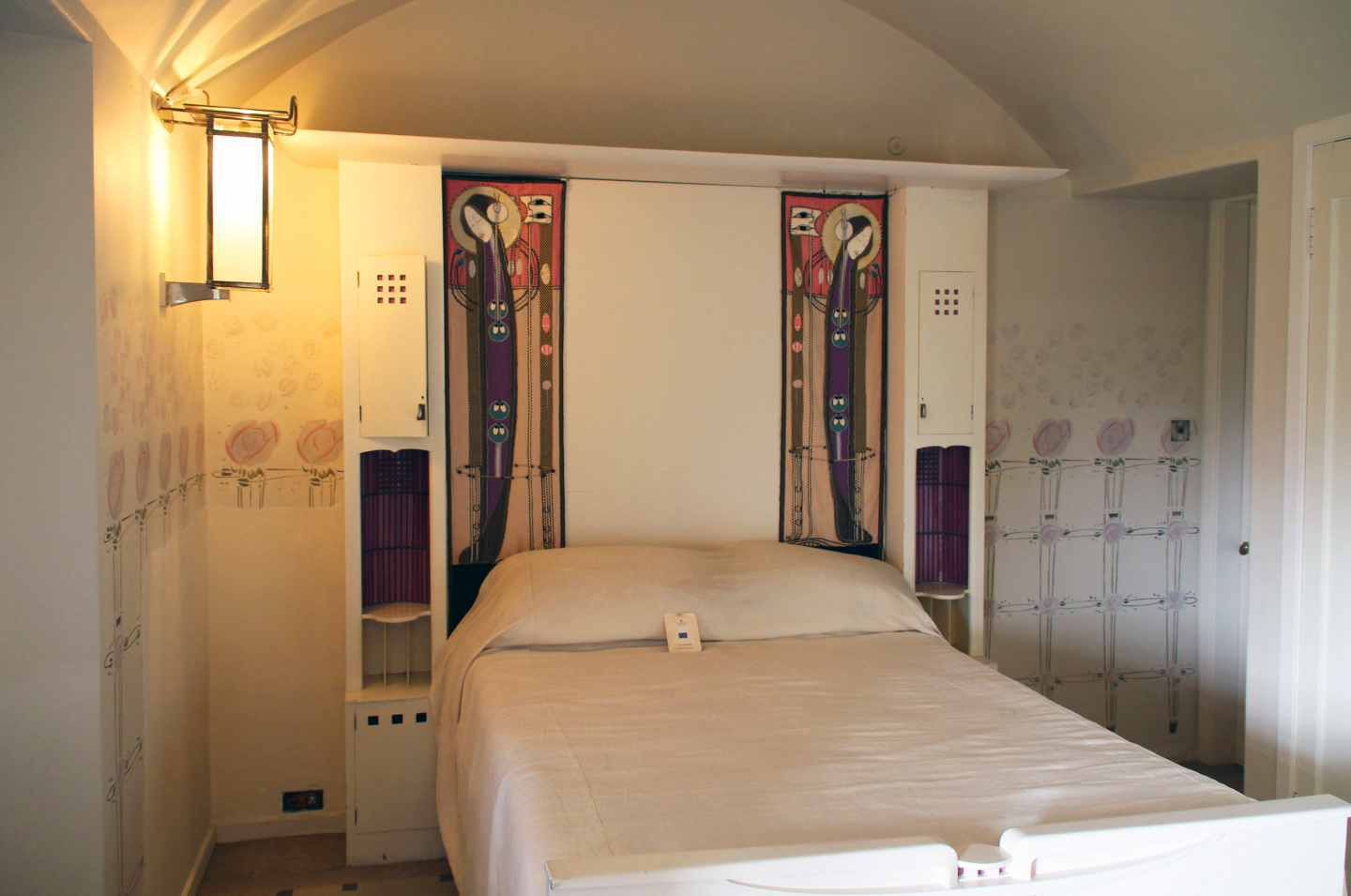
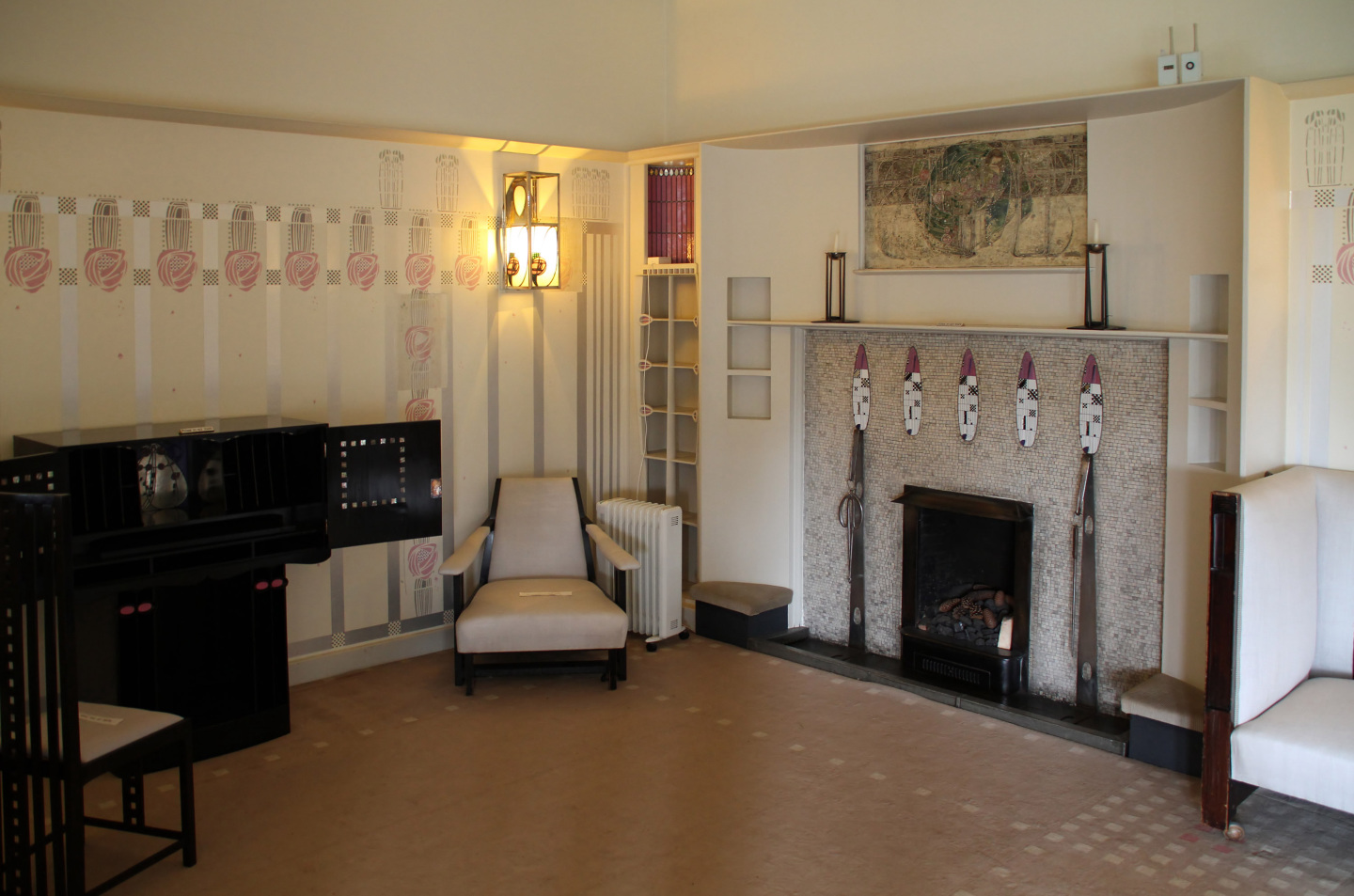

Mackintosh’s strong, graceful rectilinear lines are balanced with lyrical, naturalistic accents in illustrations and paintings throughout his work. The fireplace—often a place where the Art Nouveau style is expressed most flamboyantly—is framed by a glinting silver geometric mosaic with abstract features and, just above it, there is a beautiful gesso panel by the artist Margaret Macdonald, Mackintosh’s wife and close collaborator. The painting, famous in its own right, is of a sleeping woman wrapped in vines, resting on a bed of roses.
Throughout Hill House, Mackintosh deals in high contrasts between light and dark; masculinity and femininity; seriousness and whimsy; minimal, simplified forms and loose, organic forms. Mackintosh balanced restraint with unruly creativity. He once said, “There is hope in honest error, none in the icy perfections of the mere stylist.” Although there’s little error to be found in Hill House, it’s clear that Mackintosh was no mere stylist, but an artist challenging the conventions of design with his own vision.










 in your life?
in your life?

